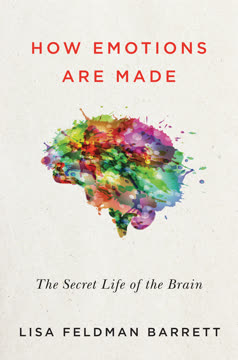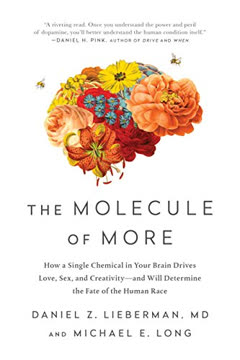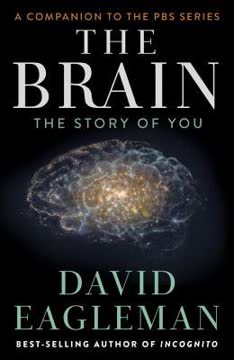Puntos clave
1. La plasticidad del cerebro permite la adaptación y moldea nuestra identidad
Todas las experiencias de tu vida, desde conversaciones individuales hasta tu cultura más amplia, moldean los detalles microscópicos de tu cerebro.
La neuroplasticidad es clave. La capacidad del cerebro humano para reconfigurarse nos permite adaptarnos a diversos entornos y aprender a lo largo de nuestras vidas. Esta plasticidad es más pronunciada en la infancia, cuando el cerebro forma y poda conexiones basadas en experiencias. Sin embargo, continúa en la adultez, aunque a un ritmo más lento.
Las experiencias nos moldean. Cada interacción, desde conversaciones casuales hasta la inmersión cultural, altera físicamente la estructura de nuestro cerebro. Este constante remodelado significa que nuestra identidad no es fija, sino que evoluciona a medida que acumulamos experiencias. La adaptabilidad del cerebro se demuestra en casos extremos, como el de Cameron Mott, quien funcionó normalmente después de que le extirparan la mitad de su cerebro.
Aspectos clave de la neuroplasticidad:
- Poda: El cerebro elimina conexiones no utilizadas
- Fortalecimiento: Las conexiones frecuentemente usadas se vuelven más fuertes
- Adaptación: El cerebro puede reasignar funciones a diferentes áreas si es necesario
2. Nuestra percepción de la realidad es una ilusión construida
A tu cerebro no le importa de dónde obtiene los datos. Cualquier información que llegue, el cerebro decide qué hacer con ella.
La realidad es subjetiva. Lo que percibimos como realidad es en realidad un modelo cuidadosamente construido por nuestros cerebros. Este modelo se basa en una entrada sensorial limitada y la interpretación que hace nuestro cerebro de esa entrada. Nuestros sentidos no proporcionan una ventana directa al mundo, sino una representación altamente procesada.
La sustitución sensorial demuestra flexibilidad. Los experimentos muestran que el cerebro puede adaptarse para recibir información a través de canales no convencionales. Por ejemplo, las personas ciegas pueden "ver" a través de sus lenguas o espaldas usando dispositivos de sustitución sensorial. Esto revela que nuestra percepción de la realidad no es fija, sino que puede ser alterada y expandida.
Ejemplos de realidad construida:
- El color no existe en el mundo externo, solo en nuestra percepción
- La percepción del tiempo puede distorsionarse en situaciones de alto estrés
- Las ilusiones ópticas revelan los intentos del cerebro de dar sentido a la información ambigua
3. Los procesos inconscientes dominan la toma de decisiones y el comportamiento
No somos conscientes de las decisiones que se toman en nuestro nombre.
El inconsciente reina. La mayoría de nuestras decisiones y acciones son impulsadas por procesos inconscientes en el cerebro. Estos procesos operan por debajo de nuestra conciencia, moldeando nuestro comportamiento, creencias y elecciones sin nuestra intervención consciente. Esto desafía la noción de libre albedrío y control consciente sobre nuestras acciones.
Piloto automático y pericia. Muchas tareas complejas, una vez aprendidas, se automatizan y requieren poco esfuerzo consciente. Esto libera recursos cognitivos, pero también puede llevar a acciones de las que no somos conscientes. La pericia en una habilidad a menudo implica menos pensamiento consciente, como lo demuestra la diferencia en la actividad cerebral entre un novato y un experto realizando la misma tarea.
Influencias en la toma de decisiones inconsciente:
- Priming: Las señales ambientales sutiles afectan nuestras elecciones
- Emociones: Las corazonadas guían muchas decisiones
- Experiencias pasadas: Los recuerdos almacenados moldean nuestras reacciones
- Sesgos: Los prejuicios inconscientes impactan nuestros juicios
4. La interacción social es crucial para el funcionamiento cerebral y la supervivencia humana
El funcionamiento normal del cerebro depende de la red social que nos rodea. Nuestras neuronas necesitan las neuronas de otras personas para prosperar y sobrevivir.
Los humanos son inherentemente sociales. Nuestros cerebros están diseñados para la interacción social, con circuitos neuronales específicos dedicados a entender y conectar con otros. Esta naturaleza social ha sido crucial para la supervivencia humana y el desarrollo de sociedades complejas.
El aislamiento perjudica el cerebro. La falta de interacción social puede llevar a un grave malestar psicológico y al deterioro cognitivo. El dolor del rechazo social activa las mismas regiones cerebrales que el dolor físico, subrayando la importancia de los lazos sociales para nuestro bienestar.
Aspectos clave de la neurociencia social:
- Neuronas espejo: Nos ayudan a entender y empatizar con las acciones de otros
- Teoría de la mente: Nos permite atribuir estados mentales a otros
- Dolor social: El rechazo activa las regiones cerebrales que procesan el dolor
- Dinámicas de grupo: Tendencia a formar grupos internos y externos
5. La tecnología y la neurociencia están convergiendo para mejorar las capacidades humanas
Ya no somos una especie natural que tiene que esperar adaptaciones sensoriales en una escala evolutiva. A medida que avanzamos hacia el futuro, diseñaremos cada vez más nuestros propios portales sensoriales al mundo.
Aumentando los sentidos humanos. Los avances en neurociencia y tecnología nos están permitiendo expandir nuestras experiencias sensoriales más allá de las limitaciones naturales. Desde implantes cocleares para sordos hasta dispositivos experimentales que nos permiten "sentir" datos, estamos entrando en una era de experiencias sensoriales diseñadas.
Interfaces cerebro-máquina. La tecnología que permite la comunicación directa entre cerebros y dispositivos externos está progresando rápidamente. Esto abre posibilidades para controlar prótesis con el pensamiento o incluso extender nuestras capacidades físicas más allá del cuerpo humano.
Ejemplos de aumento humano:
- Dispositivos de sustitución sensorial para ciegos
- Prótesis controladas por el cerebro para amputados
- Dispositivos experimentales para "sentir" flujos de datos
- Potenciales mejoras futuras de la memoria y la cognición
6. La conciencia emerge de interacciones neuronales complejas
Dondequiera que mires, puedes encontrar sistemas con propiedades emergentes. Ningún trozo de metal en un avión tiene la propiedad de volar, pero cuando organizas las piezas de la manera correcta, el vuelo emerge.
La emergencia explica la conciencia. La conciencia es probablemente una propiedad emergente que surge de las complejas interacciones de miles de millones de neuronas en el cerebro. Al igual que una colonia de hormigas exhibe un comportamiento complejo a través de acciones individuales simples, la conciencia emerge de la actividad colectiva de unidades neuronales simples.
Integración y diferenciación. Las teorías sugieren que la conciencia requiere un equilibrio entre la integración (comunicación generalizada a través de regiones cerebrales) y la diferenciación (capacidad de representar estados distintos). Este equilibrio permite la rica y unificada experiencia de la conciencia.
Conceptos clave en la investigación de la conciencia:
- Correlatos neuronales de la conciencia
- Teoría de la Información Integrada
- Teoría del Espacio de Trabajo Global
- El Problema Difícil de la Conciencia
7. El futuro puede involucrar la inmortalidad digital y la existencia no biológica
Estamos en un momento de la historia humana en el que la unión de nuestra biología y nuestra tecnología trascenderá las limitaciones del cerebro.
Subir la conciencia. Las tecnologías futuras podrían permitirnos transferir nuestra conciencia a sustratos no biológicos, lo que podría llevar a una forma de inmortalidad digital. Esto podría alterar radicalmente nuestro concepto de vida, muerte y existencia humana.
Realidades simuladas. Si la conciencia puede ser subida, se abren posibilidades para existir en mundos simulados o incluso explorar el cosmos enviando nuestros seres digitales a planetas distantes. Esto plantea preguntas filosóficas sobre la naturaleza de la realidad y nuestro lugar en ella.
Implicaciones de la existencia digital:
- Potencial para vidas significativamente extendidas
- Capacidad de experimentar múltiples realidades
- Consideraciones éticas de la conciencia copiada
- Posibilidad de que ya estemos viviendo en una simulación
Última actualización:
FAQ
What's "The Brain: The Story of You" about?
- Exploration of the Brain: The book delves into the complexities of the human brain, exploring how it shapes our identity, perceptions, and interactions with the world.
- Understanding Human Experience: It examines how our brains create our reality, influence our decisions, and drive our social behaviors.
- Neuroscience for Everyone: David Eagleman presents neuroscience in an accessible way, aiming to bridge the gap between academic research and everyday life.
- Future of Humanity: The book also speculates on the future of human evolution and the potential for merging biology with technology.
Why should I read "The Brain: The Story of You"?
- Insightful Content: It provides a deep understanding of how the brain functions and its impact on our lives.
- Accessible Science: The book is written in a way that makes complex scientific concepts understandable to non-experts.
- Relevance to Daily Life: It connects neuroscience to everyday experiences, helping readers understand themselves and others better.
- Futuristic Perspective: Offers a thought-provoking look at the future of human evolution and technology.
What are the key takeaways of "The Brain: The Story of You"?
- Brain Plasticity: The brain's ability to adapt and change throughout life is a central theme, highlighting its role in learning and recovery.
- Social Nature of Humans: The book emphasizes the importance of social interactions and how they shape our brain and behavior.
- Reality Construction: It explores how our brains construct our perception of reality, often leading to illusions and misconceptions.
- Future Possibilities: Eagleman discusses the potential for technological advancements to enhance human capabilities and alter our understanding of identity.
How does David Eagleman explain brain plasticity in the book?
- Adaptability: Eagleman describes the brain as a "livewired" organ, constantly reshaping itself in response to experiences and environments.
- Childhood Development: He explains how the brain's wiring is particularly flexible during childhood, allowing for rapid learning and adaptation.
- Adult Plasticity: While less pronounced than in children, adult brains also exhibit plasticity, enabling learning and recovery from injuries.
- Implications for the Future: The concept of plasticity suggests potential for future enhancements through technology and new sensory experiences.
What is the significance of social interactions according to "The Brain: The Story of You"?
- Essential for Survival: Social interactions are crucial for normal brain function and human survival, as emphasized by Eagleman.
- Empathy and Understanding: The book explores how our brains are wired to empathize and understand others, which is vital for social cohesion.
- Impact of Isolation: Eagleman discusses the detrimental effects of social isolation on mental health, highlighting the brain's need for social connections.
- Group Dynamics: The book examines how group behavior and social structures influence individual brain function and decision-making.
How does "The Brain: The Story of You" address the concept of reality?
- Constructed Perception: Eagleman explains that our perception of reality is a construction of the brain, influenced by sensory inputs and past experiences.
- Illusions and Misconceptions: The book discusses how the brain can be tricked by illusions, revealing the subjective nature of reality.
- Role of Expectations: Our expectations and prior knowledge shape how we perceive the world, often leading to biases and errors.
- Implications for Understanding: Understanding the brain's role in constructing reality can help us better navigate our perceptions and interactions.
What does David Eagleman say about decision-making in the book?
- Complex Process: Decision-making is portrayed as a complex interplay of competing neural networks, each with its own goals and desires.
- Role of Emotions: Emotions play a crucial role in decision-making, providing quick summaries of situations to guide choices.
- Influence of the Unconscious: Many decisions are influenced by unconscious processes, highlighting the brain's hidden operations.
- Improving Decisions: Eagleman suggests that understanding these processes can lead to better decision-making strategies and societal policies.
How does "The Brain: The Story of You" explore the future of human evolution?
- Technological Integration: Eagleman speculates on the integration of technology with biology, potentially enhancing human capabilities.
- Sensory Augmentation: The book discusses the possibility of adding new senses to the human experience through technological advancements.
- Extended Lifespan: Eagleman explores the potential for extending human life and consciousness through scientific innovations.
- Ethical Considerations: The book raises questions about the ethical implications of altering human biology and identity.
What are the best quotes from "The Brain: The Story of You" and what do they mean?
- "Our brains are like snowflakes": This quote emphasizes the uniqueness of each individual's brain, shaped by personal experiences and environments.
- "We are works in progress": Eagleman highlights the ongoing nature of brain development and identity formation throughout life.
- "The brain is a relentless shape-shifter": This reflects the concept of brain plasticity, illustrating its ability to adapt and change.
- "We need each other": A reminder of the fundamental social nature of humans and the importance of social connections for brain health.
How does David Eagleman address the mind-body problem in the book?
- Neuroscientific Perspective: Eagleman explores the relationship between mental experiences and physical brain activity, challenging traditional dualism.
- Consciousness and Brain Activity: He discusses how consciousness emerges from complex neural interactions, rather than being separate from the brain.
- Impact of Brain Changes: The book examines how changes in brain structure or chemistry can alter personality and behavior, supporting a monistic view.
- Ongoing Mystery: While providing insights, Eagleman acknowledges that the mind-body problem remains one of neuroscience's greatest challenges.
What methods does "The Brain: The Story of You" suggest for enhancing brain function?
- Lifelong Learning: Eagleman advocates for continuous learning and mental challenges to promote brain health and plasticity.
- Social Engagement: Maintaining strong social connections is emphasized as crucial for cognitive function and emotional well-being.
- Physical Activity: Regular exercise is highlighted as beneficial for brain health, supporting memory and cognitive abilities.
- Technological Aids: The book explores the potential of technology to augment sensory experiences and cognitive capabilities.
How does "The Brain: The Story of You" relate to current neuroscience research?
- Cutting-Edge Insights: The book incorporates the latest findings in neuroscience, providing a contemporary understanding of brain function.
- Bridging Science and Life: Eagleman connects scientific research to everyday experiences, making complex concepts relatable and applicable.
- Future Directions: The book discusses emerging areas of research, such as brain-machine interfaces and sensory augmentation.
- Interdisciplinary Approach: Eagleman draws on insights from psychology, biology, and technology to present a holistic view of the brain.
Reseñas
El cerebro: La historia de ti recibe en su mayoría críticas positivas por su accesible introducción a la neurociencia. Los lectores elogian el estilo de escritura cautivador de Eagleman y los ejemplos fascinantes que presenta. El libro abarca temas como la conciencia, la toma de decisiones y el comportamiento social. Algunos consideran que carece de profundidad para aquellos que ya están familiarizados con la neurociencia. Los críticos señalan frases repetitivas y una simplificación excesiva de conceptos complejos. En general, se recomienda como una introducción entretenida a la ciencia del cerebro para lectores en general, aunque aquellos que buscan material más avanzado pueden sentirse decepcionados.
Similar Books













